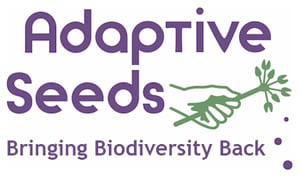Kale, Russian Frills (Organic)
Brassica napus. 25 days baby, 50 days full.
An extremely frilly red Russian type. Appears to have frills on frills upon frills. Seems to be more resistant to aphids and heat than other kales. Good for making high volume bunches easily. Also great for salad mix before the frills start truly frilling. A reintroduction of a nearly extinct Oregon variety bred by Tim Peters in Douglas County, Oregon. Commercially lost in the US, but we found it in Belgium with Seedsman Peter Bauwens.
Seed produced by Uprising Organics in Lynden, Washington.
As required by the Oregon Department of Agriculture and the Washington Crucifer Quarantine, all Brassica family seed lots have been tested and found negative for blackleg (Phoma lingam) by an approved, certified lab.
| Geographical Origin |
|---|
Sow indoors with good potting soil February through September. Transplant about 3-4 weeks after sprouting. In our region, kale can grow through the winter without protection, and survives best when sown in June or early July for this purpose. Alternatively, direct sow March through September.
Seed Saving
To maintain genetic diversity and prevent inbreeding, collect seeds from 10 or more plants of B. napus varieties, or 30 or more plants of B. oleracea. Cut seed heads when pods are dry, place on tarp, thresh by hand or by dancing. Winnow and screen to clean. Isolate from other Brassicas of the same species by ½ mile.



Rosi Goldsmith –
Where did you grow this variety? Oregon
True to its description, it does have frills upon frills. Beautiful and delightful. Compared to the other Kales in my garden, it decisively had way fewer aphids. Plus no cabbage loopers! I guess too frilly for the moths to land?
Upvote if this was helpful (0) Downvote if this was not helpful (0) Watch Unwatch Flag for removal